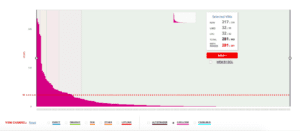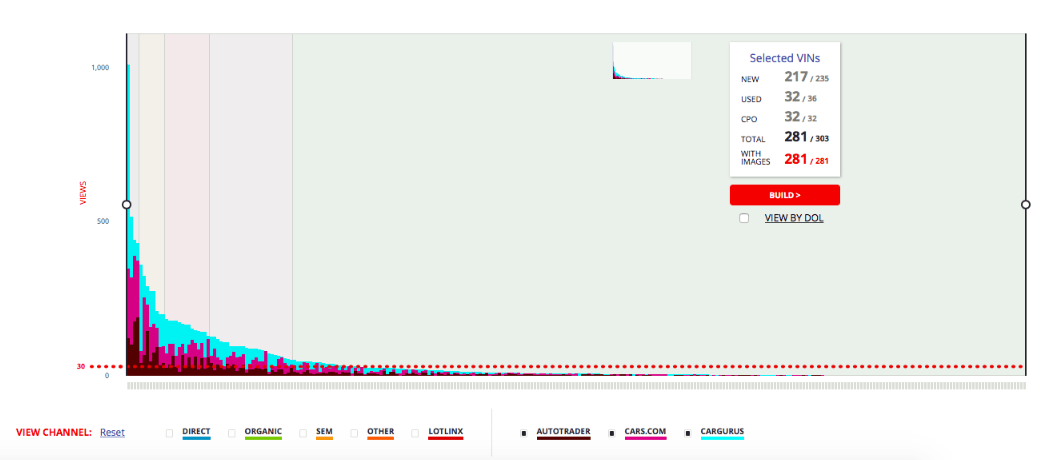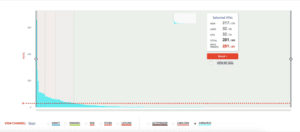NO BETTER TIME FOR CHANGE

Sean Peoples, LotLinx Chief Revenue Officer
I started writing this before the whole COVID-19 thing started, which meant that I was going to start with something like, “Can you remember how you measured success before the onslaught of data and the dominance of third party online advertising?” But, honestly right now I’m having a hard time remembering what it’s like to do crazy things like wearing pants, and shaving more than once a month. I mean, I kind of like the standing 6 feet apart in-line thing — I have personal space issues — but most of the other stuff has been pretty disorienting. So I kind of shelved this for a bit. But after spending several weeks locked in my house (looking more and more like a hermit) I’ve really been thinking about how much tracking results, and determining what’s working and what’s not is an even more important topic than ever. When times are good, taking the time to weed out what’s not working is a luxury. Before COVID-19, time was in short supply and money wasn’t – so it was easy to just throw money at the problem! Fast forward a couple of pandemic months, and determining which vendors are working is the most important thing you can do.
HOW DID WE GET HERE?
So looking back before the dominance of online listings sites like AutoTrader, what was there? The newspaper for inventory, and maybe billboards or TV for awareness. Newspapers were easy to measure. There was a guaranteed local audience, consumers could “opt-in” to your ad by turning to the classified sections. Low and behold, any cars you promoted within that paper would be gone by the end of the week. Page space was at a premium, so you had to work hard to decide which cars and what deals to promote. All of this was an art form in and of itself that guaranteed results (or came close anyway). Could you see clicks, page views, “leads,” CPM rates, SRP to VDP ratios? No, but you could see a direct correlation between cars advertised and cars sold.
Along came the online listings sites with their promises of unlimited space. List all your cars! No more having to do the work of picking which cars to promote, promote them all! It’s no surprise that since they grew out of the newspaper, they celebrated the lack of physical space limitations. But with that they lost the targeted nature of actively selecting what to promote, to whom, and when. It’s not a technology issue (we’re for sure not ones to knock technology), it’s just a false promise. You can’t give an equal lift to all of your inventory by simply listing them all on a website somewhere. So without the ability to measure their success by cars sold, what’s a third party listing site to do? Make up metrics that can tell you what success looks like, that’s what.
THE MADNESS BEHIND THE METRICS
When you can’t see increased sales velocity on specific cars that are promoted via any vendor’s platforms, you have to trust the metrics they show you as success. How many VDP views did you get? How many “leads”? Clicks, session duration, dwell time…? Does it matter to them that all of those VDP views or leads were on the same two cars? Nope. Look at the VOLUME! They chose the metric, and engineer their site around that designated metric. It makes sense that AutoTrader believes dealers should focus on SRP views when their site is built to return as many results as possible, mainly by making it almost impossible as a consumer to just get to a specific car. Looking for a Camry on AutoTrader? How about all Sedans instead… CarGurus mainly points to leads to justify their existence. As metrics go, it for sure isn’t the worst. You have contact info and can see downstream close rates, but the fact that 80% of your leads are for cars that are “great” deals, and not really the cars you need help with, isn’t very profitable. So thanks, I guess? It makes sense that someone would be pretty good at measuring up to the metric that they have spent years engineering their sites, traffic acquisition strategies, and dashboards around.
In the end, I’m really not trying to bash these guys, I spent years at CarGurus and especially in the early days, there was the earnest desire to help dealers sell more cars. So I don’t think that anyone is sitting back with their cloven hooves on their desk, laughing maniacally about tricking anyone into giving them money for a false metric. It just means that over time the general acceptance of a metric as a measure of success for a specific vendor can lose its intended meaning. Remember the lead aggregators? The number of leads you got from them wasn’t the measure of success, you bought 100 leads, you got 100 leads. Sometimes they had to dig pretty deep to get them, though… So standardizing and normalizing the metrics that are important to you is a more important measure of success than whatever any vendor is telling you success looks like. Basically are you selling enough via the platform to justify the expense of the promotion, and how confident are you in that metric?
Whenever a metric is measured by quantity, aggregation can sometimes equal obfuscation. 100 lead aggregator leads weren’t all the same, so the 10,000 SRP views on AutoTrader sure aren’t either. It’s relatively easy to rack up clicks, views, or leads on the cars that are already popular. But, paying money to a third party to have them promote a unit that’s already guaranteed to sell doesn’t seem like much of a success to me.
INVERTING THE ADVERTISING MODEL
Okay, so what does this have to do with LotLinx? Two things. First, what we do is almost backwards to what third parties do. They all advertise a marketplace to consumers and get you to put all of your cars in front of “their” audience. Which is actually why they are now offering 50% off for several months. Fewer quality consumers to their sites means worse performance, which means they can only give you your money back. Just like the newspaper didn’t control how many people looked at the classified page, they don’t control how many people go to their site. So how do we work backwards? We start with the consumer. We know (based on a ton of data) exactly what car a consumer is looking for, and when they are looking to buy. We then (again using a ton of data) pick the cars in your inventory that are not being promoted enough, and we get that car in front of those shoppers, no matter where they are. The result is increased sales velocity on the cars you need to move. You don’t need our metrics to show you that those cars are selling. And, you don’t need your money back from us since we consistently deliver the same results, even in these lean times… Put simply, we already have buyers for your cars, and we don’t need your cars to attract buyers to our site.
UNLOCKING TOTAL VISIBILITY
The second thing is that we have data analysis tools available to any dealer, whether you are buying anything from us or not. Specifically, the LotLinx VIN View Optimizer (VVO) normalizes performance data by tracking each dealership’s VDP views per VIN, per source. Below is just one example of the trends we see across rooftops. VDP views may not 100% correlate to sales, but it’s at least a common denominator.
Each tick mark along the horizontal axis represents a VIN currently sitting on this dealer’s lot. The vertical axis tracks the number of VDP views each VIN has received, and the stacked color blocks represent the sources responsible for each view. Like many, this dealer is allocating marketing dollars toward AutoTrader, Cars.com, and CarGurus to draw attention to their inventory. However, the graph reveals that a shockingly large portion of their traffic is only touching around 50 of their 300+ units.
While obviously not the complete picture, VDP views are a telling metric and we generally see that 30 views in 30 days indicates a pretty high likelihood of sale. The VVO uses the red dotted line to easily call out that 30-view mark. At the moment, the value of this metric depends on how shopper volume and engagement has fluctuated in your market throughout the last few weeks. However, the line is still a valuable visual to gauge your most viewed units.
In the image above, around 20% of the dealer’s inventory receiving third party traffic is well above the 30-day line. Unfortunately, the larger percentage of inventory is well below, with over 20 units not receiving a single VDP view.
If around 30 VDP views is all it takes for a car to move, how do you value the 1,000 clicks a single unit received? Looked at in aggregate, wow 1,000 VDP views? Awesome. But seeing it all go to the same car reveals the truth behind the metrics. At some point those views and clicks become worthless, when what you really need are 10 more views on that car that’s only gotten 20 views.
Below is a vendor-by-vendor breakdown to reiterate that every platform is responsible for the same disproportionate distribution of inventory exposure. You’ll see that every one of them has a curve in dire need of flattening.


GETTING BACK TO BASICS
At LotLinx, the only quantity metric we focus on is the one that’s been driving this industry from the start: sales. We don’t use your inventory to build our traffic, we use our shoppers to help you sell cars, by getting the inventory that you need to sell in front of people who want to buy it. Flatten the curve, sign up for LotLinx today. Ha, sorry, I couldn’t resist.
At a minimum, check out our free toolset, it will at least give you some insights into what it looks like to your dealership. Get a transparent view of the quality metrics that matter most to you, like which of your cars are still being shopped, and which vendors are continuing to drive traffic to your website, with a free trial of LotLinx VVO – no strings attached.
ABOUT SEAN PEOPLES
LotLinx Chief Revenue Officer
At LotLinx, Sean is focused on scaling the LotLinx sales organization as he has done with other major players in the auto industry. Sean comes from a six-year tenure at CarGurus, working with founder Langley Steinert to build and grow the sales team as the company grew into a publicly traded organization. Prior, Peoples led Edmunds’ move to direct dealer sales, growing the group from inception.

